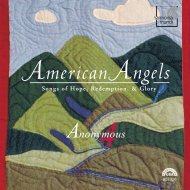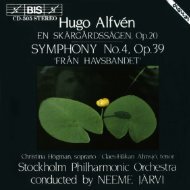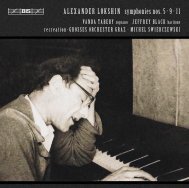Untitled - eClassical
Untitled - eClassical
Untitled - eClassical
You also want an ePaper? Increase the reach of your titles
YUMPU automatically turns print PDFs into web optimized ePapers that Google loves.
mentally based on Japanese influence. Niemann also points out Japanese traits in<br />
Debussy's music and says that it resembles Japanese scenery. Interestingly, when a<br />
work of music uses the refined language of Japonisme, there is a tendency t0 regard it<br />
as Debussyian - no matler where or when it was written. Although traditional Japanese<br />
music is usually based on two kinds of scales (the Miyakobushl scale [made up ol five<br />
notes: C - D flat - F - G - A flatl and the lnakabushi scale fmade up of the notes C - D<br />
- F - G - B flatl), Westerners seem to regard the whole-tone scale as heard in<br />
Debussy's music as representative of Japan.<br />
After Debussy, simultaneously with appearing in Lautrec's posters representing Art<br />
Nouveau style and Lafcadio Hearn's novel Kwaidan, Japonisme began to gain a slightly<br />
risqu6 image in other works. Inadequate understanding of Japan caused confusion with<br />
China and other Asian countries, and the initial esthetic interest was replaced by an<br />
exotic emphasis on 'Fujiyama-Geisha'.<br />
This is true even today. The works on this<br />
recording embody the image of Japan as seen through the eyes of composers from the<br />
end of the 1gth century to the 1930s - a period when mass media communication was<br />
yet to be conceived. The composers showed their interest in Japan in different ways.<br />
And from then on, artists' interest in Japan grew from 'Fujiyama-Geisha'<br />
into a more<br />
spiritual and highly abstract culture, as in Zen and Haiku, and evolved into the music of<br />
Cage and Messiaen.<br />
Henri Gil-Marchex: Deux lmages du vieux Japon<br />
Henri Gil-Marchex was born in 1894 and died in 1970. He studied the piano with Louis<br />
Diemer at the Paris Conservatoire and received the Premier Prix in 1911 . He toured the<br />
world as a pianist and came to Japan four times, starting in 1925. In May 1937, he<br />
himself premidred Retour du Yoshiwara (Return from Yoshiwara\ and Lune d'automne A<br />
ldzoumo (The Autumn Moon in lzumo)in Tokyo. However, the works were condemned<br />
by Japanese critics as a disgrace to the nation.<br />
The two pieces were composed in 1936 and dedicated to Alfred Cortot. While<br />
adopting melodic figures and rhythms he heard in Japan, Gil-Marchex's intention was<br />
not to imitate Japanese music but to describe his impression of it.<br />
ln Lune d'automne d ldzoumo, the sound oI Kagura (the Shinto ceremonial music)<br />
echoes in the midst of miraculous tranquillity. The music depicts a scene of divine<br />
5

















